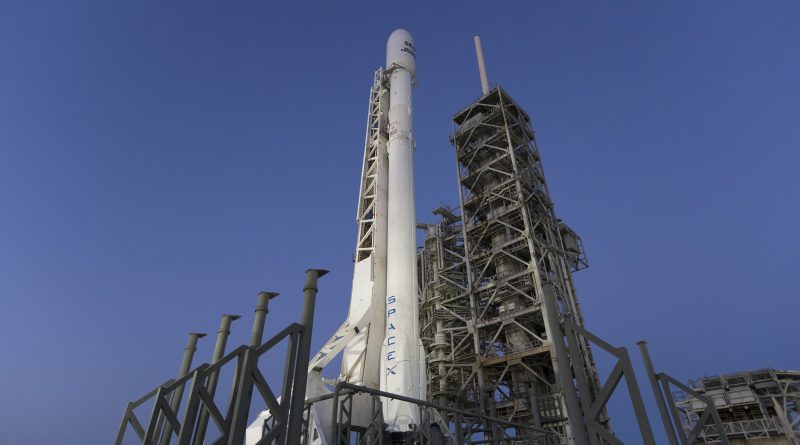SpaceX delays next Falcon 9 Launch from Florida, lines up potential Weekend Double Header
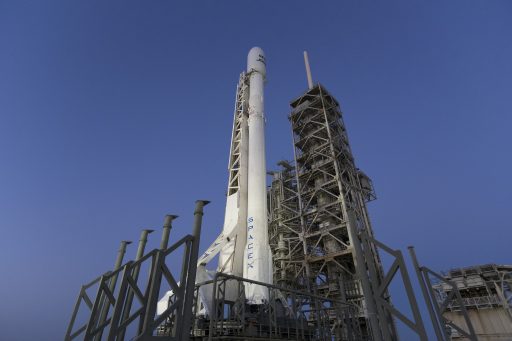
SpaceX announced on Sunday the company had reserved launch opportunities on June 23 and 24 for the next Falcon 9 mission out of Florida that will carry Bulgaria’s first commercial communications satellite – pushing the flight by four days to deal with a technical issue discovered when mating the encapsulated spacecraft to the launch vehicle.
Now on the Eastern Range for Friday and Saturday, SpaceX is lining up a weekend double-header as the company’s West Coast team is in the final stages of preparations for a Sunday liftoff with the second group of Iridium-NEXT satellites.
SpaceX announced the delay to the BulgariaSat-1 mission via Twitter on Sunday, noting the slip was to provide time for the replacement of a valve on the rocket’s payload fairing. The potential valve problem was discovered in the process of completing the final step in the launcher integration phase – installing the encapsulated payload on the rocket’s second stage inside the company’s hanger at Kennedy’s Launch Complex 39A.
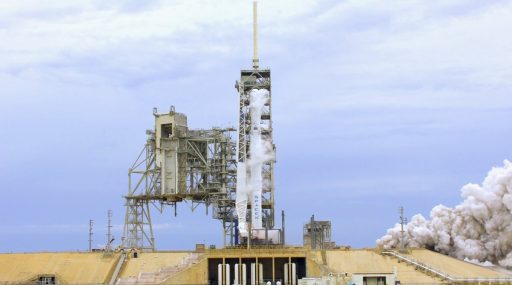
The BulgariaSat-1 launch campaign has not been as trouble-free as the last flows that allowed SpaceX to keep up a near-two-week cadence of launches from LC-39A. The Static Fire test had to be pushed from Tuesday to Thursday which also led to an initial launch delay from Saturday to Monday for reasons that are not entirely clear but are not believed to be due to one specific item rather than operations running behind schedule.
Thursday’s hold-down engine test that saw the first stage fire its nine Merlin 1D engines for seven seconds was reported clean after detailed analysis of performance data. Falcon 9 remained vertical throughout the night on Thursday and into Friday to wait for a clearing in the weather per typical rules in place at the lightning prone launch base.
Returning to the Horizontal Integration Facility, Falcon 9 was all set to meet its four-metric-ton passenger over the weekend to return to the pad Sunday evening. SpaceX CEO Elon Musk Tweeted the valve was part of the pneumatic system of the fairing and works in a dual-redundant system, but managers decided not to take the risk of committing to an attempt with a known issue on the vehicle even if in a redundant component.
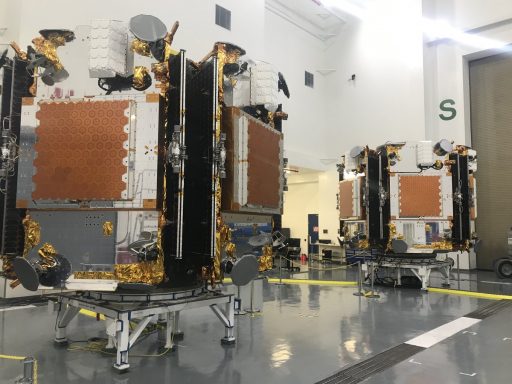
At Vandenberg Air Force Base, preparations for the second Iridium-NEXT flight have also reached a terminal stage with Falcon 9 gearing up for its Static Fire test on Tuesday in preparation for liftoff on Sunday. All ten Iridium-NEXT satellites have taken their place around the two-tier payload dispenser as of June 6 and all have been fueled for flight in readiness for integration with Falcon 9 – pending a successful test firing on Tuesday.
Managing a weekend double header would be another demonstration of SpaceX’s abilities and underline the company’s efforts on streamlining launch processes in a continued drive to accelerate its launch pace. It is understood that SpaceX can support major operations, e.g. launch attempts or Static Fire Tests that are one day apart but capabilities are not yet in place to support same-day launches from the East and West Coast.
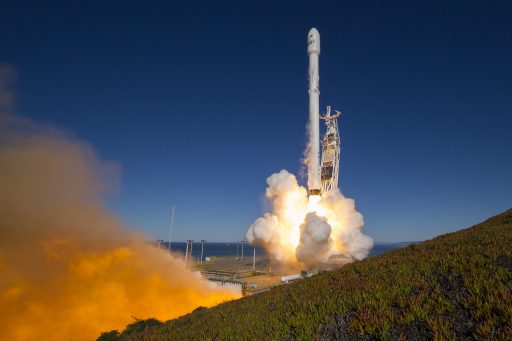
It is rather rare for the same launch vehicle or launch vehicle family to fly two times in as many days with the notable exception of Russia’s Soyuz which has managed two launches within a period of hours as recently as 2015. Launch Services provider United Launch Alliance, representing SpaceX’s primary competitor, has flown Atlas V rockets six and seven days apart in recent years.
ULA also operates with launch teams on both coasts, but noted several days are required between launches for detailed performance reviews to validate the previous mission went as planned before clearing a subsequent vehicle for launch. How SpaceX handles post-flight reviews for two missions this close together is not publicly known, though the company demonstrated it can comb through vast collections of data in a period of hours in the wake of Falcon 9 anomalies in 2015 and 2016.
Plenty of hurdles will have to be cleared for next weekend’s double header to work out including the valve repair on the East Coast and the Static Fire at Vandenberg. Additional concern will be with Florida’s weather now that convective season has fully set in, bringing thunderstorms to the Space Coast almost on a daily basis. Current planning forecasts from for Cape Canaveral show similar chances of precipitation and lightning throughout the week and BulgariaSat will likely be looking at 50/50 odds of getting off the pad on either opportunity.
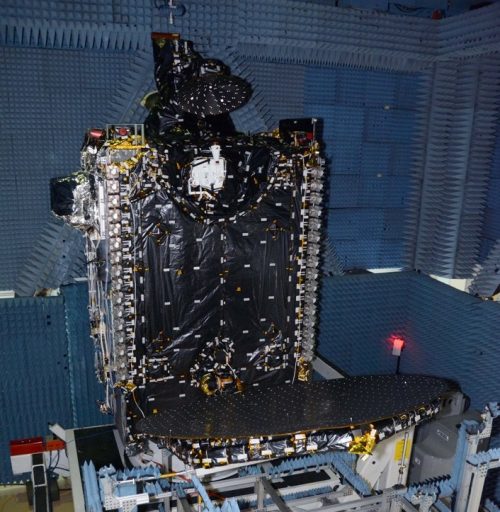
The booster flying the BulgariaSat-1 mission has enjoyed visits to both coasts of the United States, making its first flight out of Vandenberg back in January on the first Iridium-NEXT mission that ended with a successful orbital delivery and SpaceX’s first Pacific-based drone ship landing. Booster 1029 was refurbished to become SpaceX’s second flight-proven first stage to complete the trip to the edge of space again and it is the first to make the trip from both coasts.
BulgariaSat-1 weighs in at nearly 4 metric tons and hosts 33 Ku-Band transponders to deliver Broadcasting and Fixed Satellite Services, beaming HD and Ultra HD television channels to Bulgaria, the Balkan region and a large stretch of Western and Central Europe. The satellite project, valued at $235 million, has been in the making for nearly 12 years to give Bulgaria its first communications spacecraft.
>>BulgariaSat-1 Satellite Overview
The initial two-day delay and this newest four-day slip to the BulgariaSat-1 launch will also have a knock-on effect on SpaceX’s next mission in line which will be another commercial satellite delivery with the Intelsat-35e high-throughput satellite. As shown with several campaigns this year, SpaceX’s current pace at LC-39A appears to be two weeks, provided there are no surprises in the flow and the pad receives no significant damage on the previous Falcon 9 departure.

